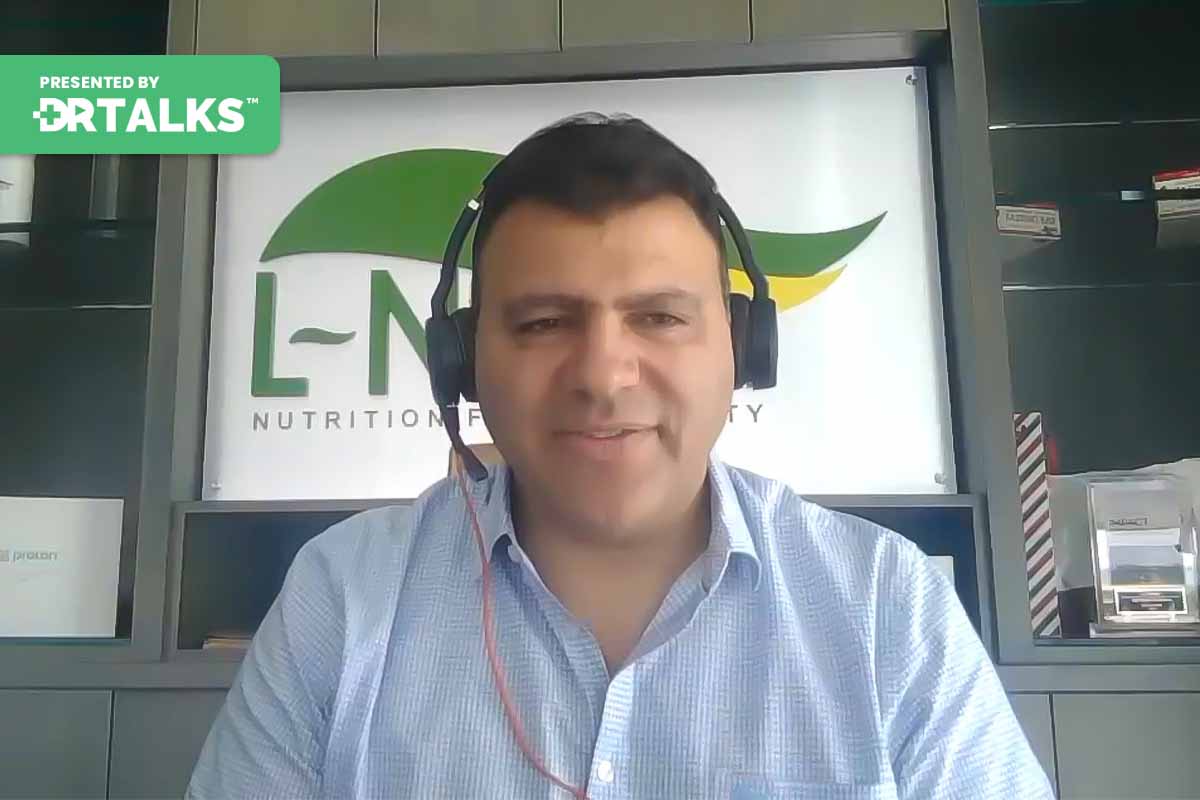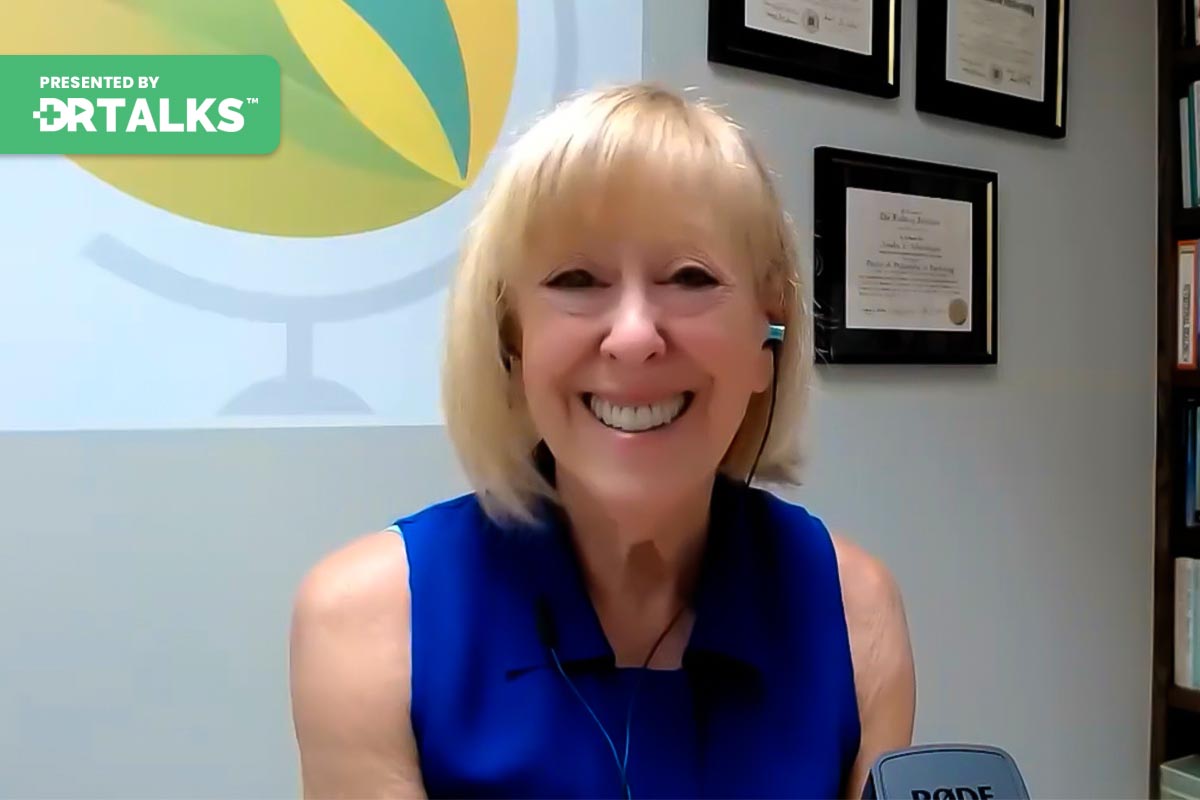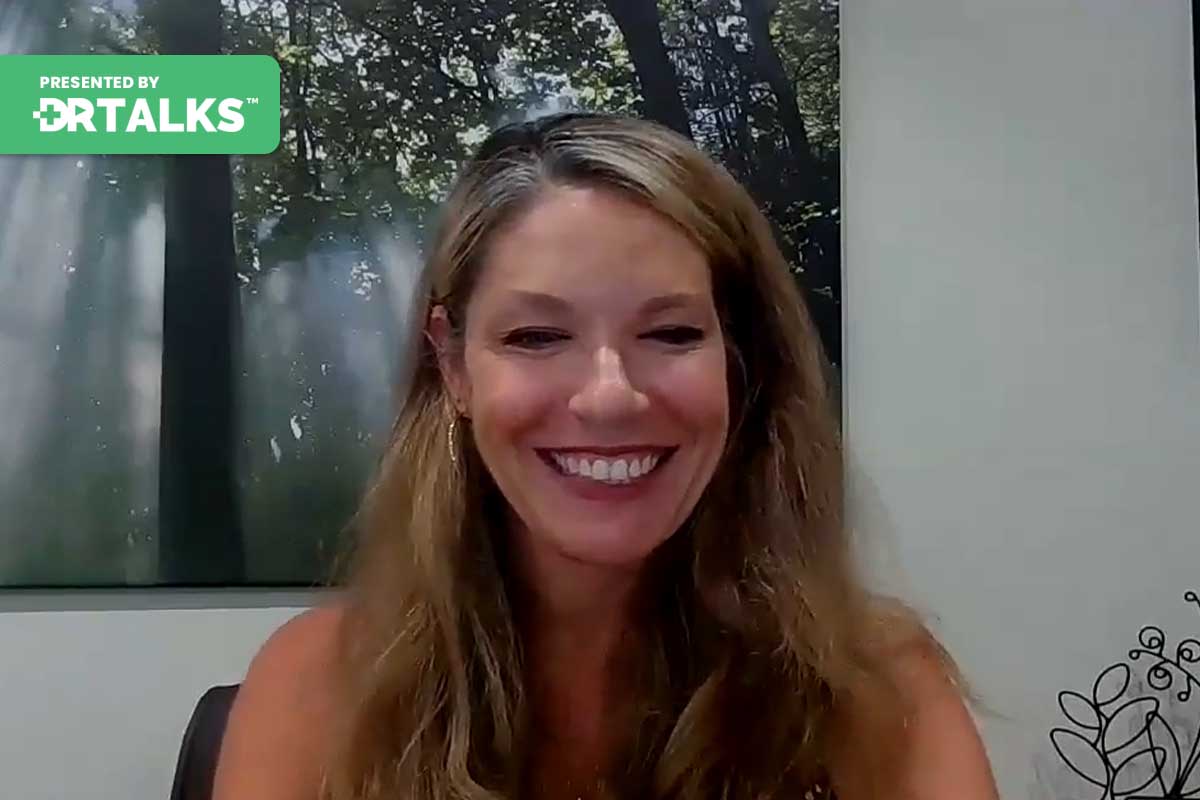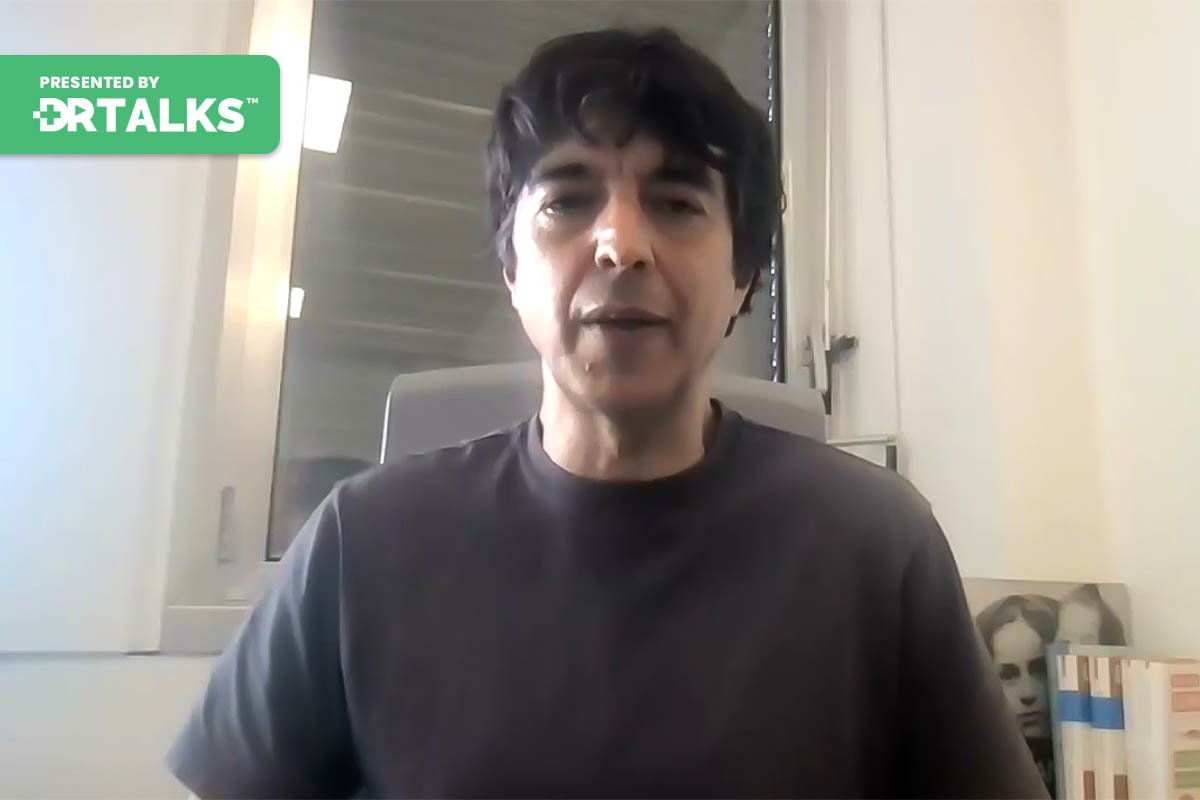Join the discussion below

Felice Gersh, MD is a multi-award winning physician with dual board certifications in OB-GYN and Integrative Medicine. She is the founder and director of the Integrative Medical Group of Irvine, a practice that provides comprehensive health care for women by combining the best evidence-based therapies from conventional, naturopathic, and holistic... Read More
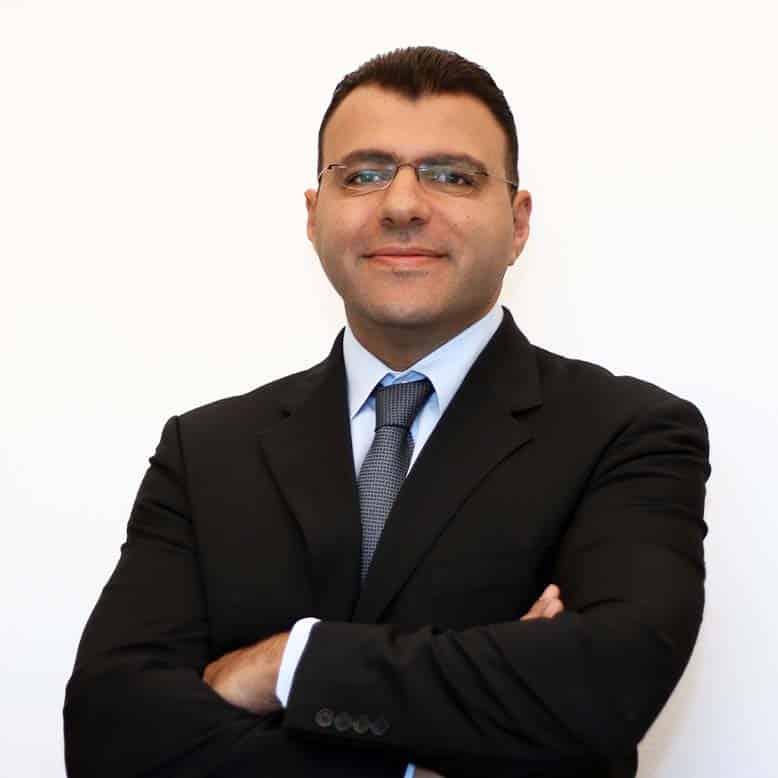
Dr. Joseph Antoun’s passion is to enhance human healthy longevity. He is the CEO and Chairman of the Board of L-Nutra, a unique Nutrition technology company leading the Food as Medicine movement and developing breakthrough nutri-technologies that profoundly impact how we age and prevent or better manage health conditions. Before... Read More
- Discover the Fasting Mimicking Diet and how women with PCOS can use it
- Learn how fasting is key to restoring metabolic health
- Understand what a good nutritional program for women with PCOS looks like
- This video is part of the PCOS SOS Summit
Felice Gersh, MD
Welcome to this episode of the PCOS SOS Summit. I’m your host, Dr. Felice Gersh. With me for this very special episode is already a longtime friend of mine and someone I admire greatly. It’s Dr. Joseph Antoun, the CEO and director of the board for L-Nutra, the most innovative company dealing with fasting without fasting; fasting mimics diet and food as medicine for longevity. Welcome. Thank you so much for joining us, Joseph. First, I’d love for you to tell our audience something about yourself and your mission in life. Because I read your bio, you do have a mission, and it’s quite a story. then we’ll do a deep dive into the different products that you’re involved with and how women with PCOS can utilize all of these items to improve their health and happiness and ultimately hopefully create healthy longevity.
Joseph Antoun, MD, PhD, MPP
I appreciate you, Dr. Gersh. I’ll say a few words about myself. Thank you for taking the floor for this introduction. Hopefully, together, we’re going to change somebody’s life today. That’s an important thing for both of us. I know that. I started my career as a physician. I wanted to be a cardiologist. I thought I would help people at least prevent health conditions and/or reverse them. Or treat their health conditions. I felt that I was doing some part of that, but I was also mainly putting people on pills that they have to take for the rest of their lives. What changed my career with medicine was that I always asked my attendings if the medicine was giving meaning—a blood thinner, a cholesterol pill, a triglyceride pill, a glucose pill. It was four or five pills that most people are being put on now, above a certain age. If they work, why do they have to refill them every month? I had zero answer to that question that I consistently ask: if the medicine is working and why it has to be repeated every month. Because we’re managing symptoms, we’re not managing most of the reasons behind the disease. I decided to venture out of medicine, and they went to health policy and public health, where Harvard ended at Hopkins, I was excited to go and help governments around the world do more prevention. I did this for a while, and then I discovered that prevention is also a set of recommendations that people already know. We know we need to eat healthy, exercise, etc. But no product represented prevention. There was no product to consume that could represent keeping people healthier and longer, and in two days, I ventured into what we call military technology, which is the study of food for longevity and food as medicine. Why food? Because that’s the only product we take every day of our lives that they were born to. The day we die is a product. We take it three to five times per day. This is nutrition. Nutrition could be the biggest poison. It could be the biggest medicine or asset for longevity. I met this gentleman by the name of Valter Longo. He is the head of the Longevity Institute at the University of Southern California. I am the author of the very famous Longevity Diet book, and I recommend everyone listening to us today to go right away and buy this book. It’s a life-changing book in which he studied and spent 23 years of his life at the University of Southern California, and now 18 other universities have joined the research of Stanford, the University of Indianapolis, the University of Miami, and later Palermo. A lot of the top research centers have joined him now in the quest to discover two things: which foods we should eat today to live a healthy, long life. The food is longevity, and we should eat it. When we have one of the four big killers, 90% of us will die from one of the four diseases: cardiovascular, cancer, Alzheimer’s, or autoimmune disease. What should we eat to be part of the cure and part of the medicine for these health conditions?
Felice Gersh, MD
What a journey you are on now, in terms of the whole notion that food is medicine. What if you could just do something like a summary? It’s very complex. But what happens in our bodies when we eat the right foods, and what happens in our bodies when we eat the wrong foods, like ultra-processed foods? Like, what can go wrong, or what can go right?
Joseph Antoun, MD, PhD, MPP
This is a very big question because food impacts every part, starting from the gut, the gut lining, and the gut microbiome, which is critical. That’s critical to the way you absorb glucose. It’s critical to what toxins leak into our bodies. It’s critical for the microbiome and the gut lining, and the blood sugar can induce spikes in insulin spikes in IGF, which then increase aging. As we know, Alzheimer’s, cancer, cardiovascular disease, and diabetes are all age-related diseases. We don’t get Alzheimer’s at age ten. In most cases, we don’t get the first cancer at age 22. Pushing the body to age through nutrition is one of the biggest secrets to longevity. This is what we specialize in at L-Nutra. The term is epigenetics, and how you read your DNA through food gets you, in most cases—40 or 50% of cases—into cardiovascular disease or diabetes. Now we’re calling it Alzheimer’s type 3 diabetes. It’s a major proponent of health conditions, aging, or reversing aging.
Felice Gersh, MD
Women who have to deal with the condition PCOS (polycystic ovary syndrome) live in a body that’s aging prematurely. All the different conditions that you mentioned happen in higher proportions and at younger ages in women with PCOS. I know that your company pioneered this nutrition for longevity, that you’ve worked with insurance companies, and that you have a major program that can help reverse conditions like, say, diabetes. Maybe you could share this with the audience because women with PCOS by age 40 have a seven-fold higher risk of developing diabetes. Almost all women with PCOS have significant inflammation throughout their bodies; this low level of inflammation means they’re insulin-resistant. Maybe you could talk about this program that’s been created that utilizes food as medicine and also incorporates fasting, mimicking diets. What does that mean? Like, we’ll go into, like, how can you fast and eat at the same time?
Joseph Antoun, MD, PhD, MPP
Yes.
Felice Gersh, MD
Go over the basics of food for longevity and the program, and then we’ll get into the fasting-mimicking diet. This is fascinating.
Joseph Antoun, MD, PhD, MPP
The major concept here is that every time we eat carbs and every time we eat proteins, some aging anabolic factors get secreted. Insulin gets secreted when you eat carbs, and IGF gets secreted when you eat proteins. Both of these factors tell the body to store food at a certain age. This is critical because, as you mentioned, PCOS is the same as obesity, the same as insulin resistance, and the same as diabetes. Maybe now for Alzheimer’s and maybe for cancer, it’s all the continuum of the overconsumption of food that pushes our body to store calories into fat, to become insulin resistant, and to age faster. To unlock these two phenomena, we have uncovered two nutrition patterns here at L-Nutra. One of the foods that we send you every day that is specifically designed is called nutrition for longevity. You can go to nutritionforlongevity.com to see the food. The food is designed to not overstimulate insulin or IGF. When you eat it, your body is not getting pushed to store it and to age further, which is what’s happening today with our modern diet. The other food pattern that we uncovered and this one took us a good 12 years and $36 million. The NIH, the U.S. government, stepped in to fund the research because it was a major discovery: the Fasting Mimicking Diet.
If we’re saying PCOS, fatty liver, insulin resistance, and diabetes are symptoms of less ideal lifestyles, fat storage, and overeating, guess what a fasting-like condition is the opposite of that and can help patients induce remission at a higher rate. We went, and we said that if most of the diseases we’re dealing with today are a result of frequent eating of unhealthy food, how about we give the body the impression that it’s fasting through food? This is how the concept of a fasting-mimicking diet was born. We went and studied how the body perceives food and how the cells detect food, and we devised a nutrition formula—very precise nutrition for me—that when you eat it, the cells do not recognize that you’re eating, so you’re fasting while eating. It’s just mainly to make fasting compliant and help people take a five-day break. The ideal protocol is a five-day fasting diet. You take a break, and you eat the precise formula that mimics fasting. Your body thinks you’re not eating; your body is cleansing; it’s detoxing. The cells are rejuvenating. They’re trying to fix and align to survive that fasting pressure. You lose a lot of fat, mainly from the central and visceral fat, which is critical for PCOS, fatty liver, and other conditions and cardiovascular risk. It’s a very impactful discovery that was made some ten years ago, and we launched it on the market under the name of ProLon to promote longevity. It’s a five-day fast, nutrition-based, gluten-free, and very healthy on the ingredient level. However, it was precisely tested in multiple universities to give the body the impression that it is not eating and therefore cutting fat, cutting things that the body had stored and had evolved into health conditions or pre-health conditions.
Felice Gersh, MD
So women with PCOS as a group have a much higher rate of obesity, the visceral fat that you’re talking about, and insulin resistance. If they would like to get going because this is like, They hear this, it’s like, “The whole concept that you can eat and yet your body gets all the benefits of fasting and none of the disadvantages either.” The risks that can go along with some of the fasting with water kinds of problems. Then how often do you have to do this program? It’s been five days. What do you do when you’re not doing it? Because there are all the other days of the month that you’re not doing the ProLon. Maybe you can go into a little detail about how you came up with a regimen, what a protocol would be, and how you can reverse real medical conditions by utilizing these foods as medicine and fasting as medicine tools.
Joseph Antoun, MD, PhD, MPP
We have studied five-day fasting and nutrition with unhealthy people first. We’ve done three to five days per year. Just 15 days per year, you’re going to find anyone telling you, Hey, do something just three days for you because it works. If you’re a little bit overweight, we have been or have a pre-metabolic syndrome or your pre-existing condition that we’ve studied four times and we’ve studied up to six times, and if you have a health condition, especially diabetes, we focus on it, and all this is a continuum. Being healthy today and then predisposing, and then a little bit, we add a little bit more weight than we increased chances of PCOS, cardiovascular disease, cancer, or diabetes. This is the same continuum. Then we started doing it for six months, so five days a month for six months, and then just once every three months to maintain. I’m healthy; I do it three times per year. I need to shed a little bit more weight. I do it four times per year because I have diabetes and want to decrease my medication and induce remission. Then I do it six times, and then once every quarter.
Felice Gersh, MD
That is phenomenal. Now we know that there’s an epidemic of diabetes, not just in women with PCOS. There’s been this rush to use these drugs, the GLP-one agonist drugs. They think, “Oh, I just get a shot once a week, and maybe they’ll come out with pill versions.” And what you’re saying sounds great, but it’s more work. But are there any thoughts on, well, should people just try to do the quick fix? Is that reversing? Is that like you talked about your start in medicine? It’s like, Why are you taking this drug if it’s not curing you? Perhaps because there are so many people turning to drugs, it’s becoming an epidemic. so I can’t even bring that up. Do you have any comments on the explosion of GLP-one agonists and similar?
Joseph Antoun, MD, PhD, MPP
This is probably the most important question to ask today. Because everyone is going into it. Everyone, but many people, are going, and soon the injectable will be a drug taken by mouth. It helps you lose weight quickly. The reason that weight loss companies have failed is the same reason why Ozempic and others would go away, and others would face the same challenge. If they give you either a low-calorie, long-term, restrictive diet or it is impacted, it will go with a decrease in your appetite and your food intake. The problem with chronic caloric food decrease, which was studied extensively before and in the biosphere as well in a trial, we’re just repeating that bias you’re trying, though. At a mass level, people lose fat, but they lose muscle at the same time, and their metabolic rate decreases. When you’re on a long-term plan, this is where medicine has to interfere, and the drugs, like in movies, come at an expense. You should do them with a balance of risk. “Hey, I’m gaining a lot of weight; I’m pre-diabetic, and I need a quick start.” Maybe then. But the problem now is that we make them chronic and lose weight from muscle and fat. When you lose the muscle, you lose the engine of the body. When you go back and you stop your body service or your ass and people in the others, the body picks up fat very fast because it lost the muscle; it lost the burn rate.
You get that it’s very difficult to rebuild the muscle, especially at a later age in life. regaining the fat back fast, you’re not gaining the muscle back. You have a lower metabolic rate, and you go even deeper and faster into the condition that you were trying to get rid of. It’s a very important notion for people to understand that if the risk is high for them to get a health condition, maybe they should use those drugs in the very short term. A lot of doctors are now balancing this. They’re saying to take half a dose of the regular ozempic and take ProLon the five-day fasting nutrition with it. This is something we haven’t discussed; it’s key for PCOS. The only diet proven to protect lean body mass today is the ProLon five-day fasting-mimicking diet. How do you mimic fasting with food and protect your muscles? It’s because the body rejuvenates. It’s the cellular rejuvenation and the fasting. Mimicking attrition is not a weight loss intervention, although you lose a lot of weight fast. But it’s a protection and rejuvenation intervention. We see the muscle cells rejuvenating growth hormone, as the stress hormone is high when you’re doing it. It’s pushing the muscle to grow at the same time you’re feeding. This is why it’s fasting with nutrition, so the muscle gets preserved. This is critical. You want to shed fat; you want to protect the muscles, especially when you start getting a little bit older. There is a role for this medication in the same way there’s a role for any medication that the FDA has approved. The problem is that you have to always weigh the risks and do things if you can do them in the short term because any single intervention you take in any drug has effects and side effects. This is where people left ProLon, and some doctors are either doing ProLon to help the body lose fat or they combine it with a small dose of semaglutide to not get the side effects of semaglutide and yet combine the two interventions.
Felice Gersh, MD
That would be great if you just took a slight edge off of the drive to binge eat or something of that sort. Because what I’m finding is that it takes away their interest in food altogether and their joy of food, and they’re supposed to be on this for life. Eating is one of the joys of living. We don’t want to not enjoy that part of life. So much of life is getting together with friends and family and enjoying a meal. We just want it to be a healthy meal. But now they’re not enjoying food at all, and they’re on what seems like a starvation diet. I’m worried long-term about their nutritional status if they’re going to be all malnourished. I was going to say that one of the traditional approaches to weight loss has been starving people, through these starvation diets. Of course, prolonged fasting or just having severe caloric restriction would fit into that category. I’m glad that you mentioned it. Maybe just like to reiterate a little bit what happens if someone says, “I’m going to spend the next several months eating a super low-calorie diet, basically a semi-starvation diet, and I’m going to lose all this weight.” Maybe just repeat a couple of these key points. I just want you to, like, drive it home again. Why is it not a good idea to, like, try to reverse your issues with, like, insulin resistance or being overweight or obese by going on a semi-starvation diet?
Joseph Antoun, MD, PhD, MPP
There’s a lot of science that has been tested there, and it starts with mice, then monkeys, and then humans. It was a trial in the late eighties or nineties, which they called the biosphere, where they even secluded people in the desert and a bubble. They gave them close to 30% of what they would eat. This is what’s happening today with semaglutide. We were repeating a mass level of the biosphere trial, and of course, you lose weight. If you have high blood pressure and high inflammation, that will help you on one side, and the other side, your muscle immunity will decrease. We don’t know, but there’s also a risk of osteoporosis that might happen at a later stage that has not been confirmed. But at least immune depression must cause muscle loss. This is how fasting science came up, came back, and said if you should not deplete the body chronologically over time, then how about we send an acute signal to the body of fasting? But just short-term, and these are the five-day fasting-mimicking diet that was borne. It was borne out of watching people get calorically stored for a long period, which was the healthy way to go. But this is what we’re seeing today: semaglutide. Muscle and metabolic rates are critical. The engine has to stay high so that whenever you eat, after you burn it, or consume it, you build and rebuild it in the right way rather than store it. This has been very critical, as you mentioned, for a long time. Somebody has high risk; maybe semaglutide is short-term; you have to detox off it. We’re not talking about cancer risk because it’s on the label. These are short-term trials that millions of people are doing. They are going to do that long trial. We are seeing gastroparesis. A lot of the recent CNN articles are covering people who are starting to have stomach issues now because, like every drug, any drug has side effects. Any drug taken every day has to have a major reason because otherwise, you’re paying the price of that. The nutrition solution is nutrition and lifestyle. The nutrition solution is not a drug. If you fail on every nutrition, then yes, maybe you need to, you’re preconditioned, or you already have a health condition. Then yes, take the drug for now. We’re telling you, there’s a tool you can use: healthy food you can consume every day. ProLon is a fast-mimetic nutrition program that can help you lose fat quickly. It can be used three or four times a year. They will get you the benefits you want and that prospect without the side effects that you may see with the drugs. Some doctors are just doing the combination. They’re cutting the price for the patient and the consumer by half on the semaglutide, telling them to take half a dose and then add the ProLon to it. It protects your muscles. You can still eat a little bit, and it just rebalances life a little bit for them. I’m not recommending that, but I’m just saying what people are doing. I think you should eat healthy and just have a healthy behavioral lifestyle. I’m not sure it’s worth taking the risk of cancer. Risk of gastroparesis: risk of losing your muscle just to lose weight. Maybe in the short term. If you have a very serious health condition or a reason that you need to take them, this is why they were approved first for diabetes. When it’s worth it, do it; when it’s not, try to improve a good lifestyle or be unhealthy in your nutrition program.
Felice Gersh, MD
I’m in your camp 100% and dealing with my lifestyle as much as possible. and often that’s all you need to do. A lot of people have access to different types of fasting, as some people call them, like the five two, where maybe they’ll do fasting or modified fasting a couple of days a week. What would you say? What are the particular benefits of prolonged fasting with the five-day mimicking diet versus fasting a couple of days or a modified fast, a couple of days a week, or even every other day? Like what? What happens in the different bodies?
Joseph Antoun, MD, PhD, MPP
In general, there are two types of fasting: what we call intermittent fasting between 0 hours and two days. So most people talk about fasting for 16 hours, which means you skip breakfast for 18 hours, or one meal a day. These are all kinds of intermittent fasting and anything. Again, you skip food between 0 hours and two days. It’s called intermittent fasting, which is more for weight loss than metabolic optimization. There’s a very important message here to everyone with PCOS or with some insulin resistance because there’s a lot of data on whether skipping breakfast is good or whether intermittent fasting is good or not. It’s very important to do, and all the data is right. It looks contradictory, but it’s right. The most important thing to do is to frontload what we call intermittent fasting, meaning it’s more important to eat your dinner early, at six or seven p.m. dinner, and then stay fasting overnight, and then go back to breakfast at seven, eight, or nine. You would do your 12 to 14-hour intermittent fasting, but you frontloaded it, which is very important because of the calories compared to what most people are doing today, which is eating at 10 p.m. and then the next day they go, and they all lead at two p.m. They’re doing it for 14 or 16 hours, but the front end is back, with the back end towards the end. This is not showing good results because the food that we eat before sleep is not good. The body at night is anabolic. The aging factors are high. The growth hormone and insulin are increased in anything you eat at night, and the body tends to use them to store them. If you have PCOS or other related conditions, you want to eat early, go for a little walk, and then you want to sleep, and then have your breakfast the next day. This balance is the three things: longevity. Losing weight will be called the biological clock of the organ so that all the organs are resting and rejuvenated during the night. The Nobel Prize in Medicine in 2017: People talk about the Nobel Prize in Medicine in 2016 in autophagy, which we’ll talk about. But the Nobel Prize in Medicine in 2017 was about the biological clock of the organs. Organs must sleep at night and rejuvenate. When you fast above or beyond two days, then you’re talking about prolonged fasting or periodic fasting, and why the separation of today’s It’s not like it’s not like a typical clock. For some people, it’s less than two days or more. But after two days, the body is telling the cells that I burned fat. The first two days, I asked the liver to help me a little bit with the glucogenesis. This is how I burned my glycogen. I’m in crisis, so please, cells. You have to be at your best. You have to perform together so that you can survive the stress of fasting. Fasting is a calorie deficit. It’s the first two days. It is cellular rejuvenation. After the second day, you’re turning not just the weight loss into a rejuvenation of the cells. This is very critical because every cell of the body is fasting when you fast. It’s an intervention that’s impacting everything in your body. When the body tells the cells, that we need to rejuvenate to survive, detox, eat the debris in the organelles, try to fix our DNA, and try to optimize our performance so that we survive that fasting condition. You can see how it’s a reparation. It’s when you watch a car race that, when the car is worn a little bit down and needed, you go for a pit stop. The mechanics come in, they try to screen, and whatever is going wrong, they try to replace it or fix it fast. Things like a screen for the body. You put it on a screen, and every cell is rejuvenating. If something is wrong with the pancreas, the body tries to help support it. If something is wrong with that, insulin resistance is the major thing. The body tries to get rid of the fat. We’re seeing this phenomenon.
We saw it in mice, and then we went to humans, and we started doing human trials. Now there are 32 human trials on fasting mimicking nutrition at top universities around the world. We started by studying that for longevity. You lose weight, you rejuvenate yourselves, and you do it three times per year. Again, there will be rarely anyone telling you to do a product only three times a year, a nutrition product. Typically, it’s an everyday thing. You only do ProLon three times a year. It’s only five days. in total, 365 days. Give us just 15 days. It will help you at least with that, with some metabolic reset and cellular rejuvenation. Now, if you have more weight to shed, you can do it four times a year. If you’re getting diabetes, we just launched the Diabetes Remission and Regression Program. You do the five-day fasting nutrition on months one, two, three, four, five, and six. a total of 30 days only. Five days in month one, five days in month two, and to six months. then you just do it once every three months to maintain. We study this diabetes remission protocol, talking about helping people go off medication. That’s the goal. The word remission means I don’t need medication for my diabetes. The word regression means I need less medication. We called the program diabetes regression and remission, trying to take people off their medications. You can do the fasting tradition six times over six months and then once every quarter to maintain it. Research has shown that already at month six, two-thirds of the patients with diabetes will need less medication. They will lose 22 pounds on average within that month, mainly fat. There was no lean body mass proportionate to body mass loss, and they will decrease the frequency by 1.4.
Felice Gersh, MD
Wow. I was sold on ProLon before it had a name before it even was marketed, when I met Professor Valter Longo at his lab, and so on. The more research that’s done, the more enamored I am of this whole concept. It’s phenomenal what you’ve created here for so many people. I can tell you this is what I am doing and will continue to apply to my patients with PCOS because they are the perfect candidates for this. They’re not the older people, like, say, the frail people who maybe can’t do this and they’re 75. There’s a place, like you said, for pharmaceuticals, and there is a place for everything. So maybe people 75 and 80 aren’t quite going to be the right candidates, but the vast majority of women with PCOS are going to be perfect candidates for this program. I just want to share with the audience that I have done ProLon so many times. I lost count a few years ago, and it’s part of my Healthy Aging program, I have a history of PCOS myself, so I just can’t speak more powerfully and strongly in favor of this. Part of the program, of course, involves eating. You mentioned how important food is. Maybe you can comment on, well, what is food for longevity and nutrition for longevity? What do you emphasize that is part of that program when you are feeding yourself?
Joseph Antoun, MD, PhD, MPP
The Longevity Diet Book cannot recommend it enough. That’s our founder’s book. Valter Longo Time: The 50 Most Influential People in Health In this book, he describes the fasting-mimicking diet in five days and what to eat in between to live a healthy, long life. This is critical because it also helps with insulin resistance and aging, mitigating the spikes of aging factors in the body. In our school, in our program, the ideal longevity diet has two to three times per year the fasting-mimicking diet. So ProLon, we talked enough about that, and in between practice every day is the 12 hours of overnight fast, so you eat your dinner early and then you stay, and then you have breakfast the next day, and then you can follow. I’m generalizing here; it depends on the person, the age, the agenda, and all that. But in general, the pescatarian diet is rich in pescatarian, meaning plant-based, and you add fish two to three times per week. A diet that’s rich in legumes, that’s rich in nuts, vegetables, and fruits in general, we see every day a diet popping up, and people are lost in every day, every school, every book, etc.
We follow science, and we’ve spent tens of millions of dollars to uncover what we’re talking about. We track people who live and beyond to prove those points. Everything goes back into harmonizing the body with what the body is used to eating. We’ve been tailored by nature for hundreds of thousands of years. Once we depart from that harmony, this is when we start developing, like we did the last 50 years, overeating and eating high carbs and high protein. This is where we start getting diseases. If you think about it, humanity in the past lived around rivers when I did it. We didn’t live on the beaches because it’s not drinkable water. We didn’t live in the desert because there was no water or food. We live around rivers because the river is where you can drink the water. Around the river is where you have grass, trees, fruits, and vegetables, and where the animals come in to drink and you can hunt them or not. This is the pattern that humanity has followed for years. Sometimes there was food, and sometimes there was no food. This is the fasting period. The alternation of fasting and feeding is critical for the balance of life. when you want to eat those fruits and vegetables, legumes, and nuts, and it is easy to fish a fish because they can fly. The fish typically cannot run fast or fly. It was easier to fish when we had learned to fish. That pescatarian diet with periods of fasting and feeding is probably, on average, the longevity diet. Of course, if you’re 70, I would recommend something different if you’re 20—maybe a little bit more protein at that stage. There’s a lot of variation in the life cycle to optimize the harmony of the body, and that will take a long time. But for today, this is what I’m going to share with our audience.
Felice Gersh, MD
That was almost pure poetry. I’m thinking of accessing—what we evolutionarily were designed to have in our bodies and to do with our health—so that was just beautiful. Thank you so much. Now everyone wants to learn more. Everyone wants to know what their next step is. How can they learn more about your company, L-Nutra, and the different products that are coming up? We chatted a little bit about upcoming things that you’re working on, so how can they find out the latest, the greatest, and keep up on all of this incredible science and adjuncts to their health?
Joseph Antoun, MD, PhD, MPP
If you want to read more about the mission and the science behind longevity, fasting, and nutrition, you can go to L-Nutra. L is for longevity-nutra is for nutrition.com. You can read more about the portfolio of products that we have. We have designed products that can help people stay healthy and slow down the pace of aging. It’s critical to do that as well, because, again, 90% of us will die from four conditions: cardiovascular cancer, diabetes, and Alzheimer’s. They’re age-related. Keeping your inner age younger than your chronological age is probably the best practice in health care. We have a portfolio of products that can help with that. You can read about all these products on prolonlife.com. And you can see how each one gives you benefits, how it works, and how we design it. If you’re interested in getting some, this is where to go.
Felice Gersh, MD
Thank you so much. This has been fascinating, and it’s part of my healthcare portfolio for myself and my patients. Thank you. I look forward to seeing all the new adventures, research, and products that come down the line.
Joseph Antoun, MD, PhD, MPP
Appreciate it very much.
Downloads

